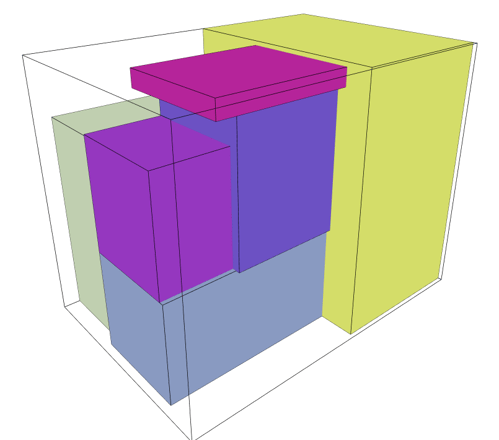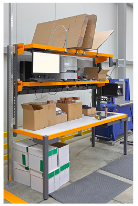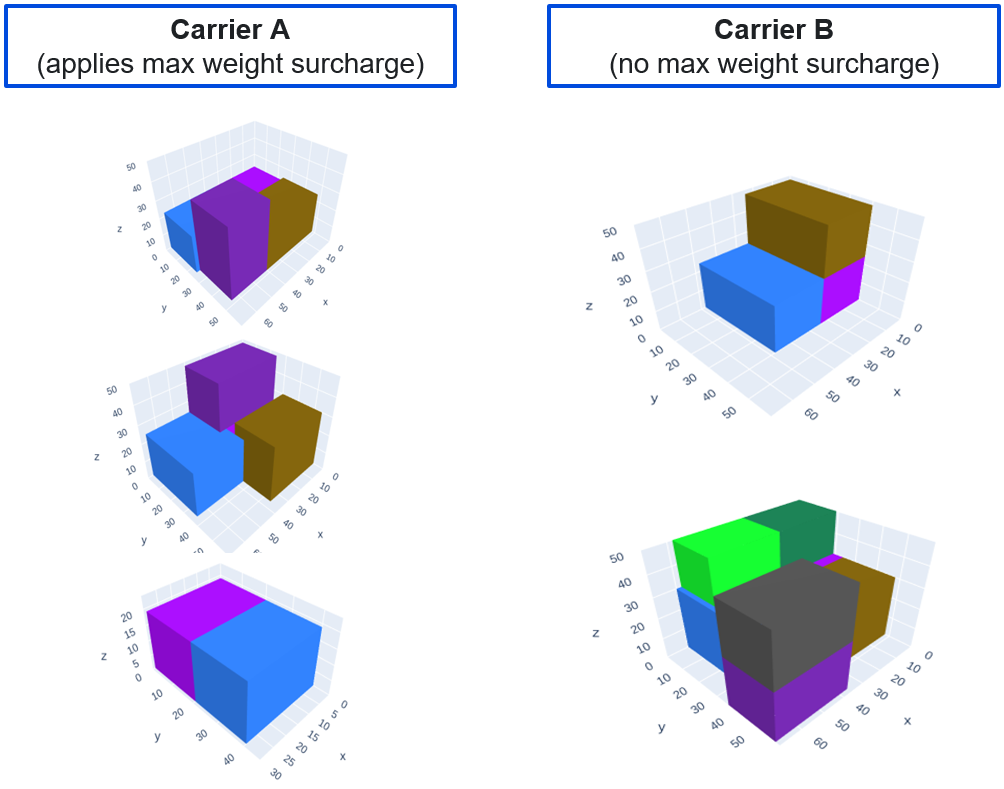
Warehouse managers are well aware of the challenges associated with packing.
One of these challenges, with significant business impact, is to choose the ideal box type to pack a certain order consisting of multiple items of varying sizes. The process is often termed as ‘Cartonization’, ‘Cubing’ or ‘Packing’.
Through better cartonization, businesses can reap several benefits, such as boosting profitability by lowering waste, enhancing operational effectiveness and increasing customer happiness through more sustainable shipments with less air.
This is especially the case for the e-commerce sector, as these often ship out large volumes on a daily basis and possess a widely varying assortment of products.
In which supply chain processes cartonization is used and what can go wrong?

1) Warehouse Packing Stations
A warehouse packing station is a workstation where the items from an order are packed together into boxes. It typically consists of a workbench and shelves with the available boxes within the warehouse, as depicted in the figure on the left. However, picking the ideally sized box for the order at hand typically relies on human decisions or simplistic heuristics, giving rise to two types of problems, discussed subsequently.
Error 1: Choosing a box that is too small
Ideally, the smallest possible box is chosen. However, when relying on gut feeling, a box that is too small to physically fit all the items in is often chosen. As a result, the packer will, after a considerable amount of time, have to perform a re-stack in a bigger box. This entails decreased productivity
Error 2: Choosing a box that is too big
The performance of warehouse workers is often measured in the number of orders that are shipped on a daily basis. Therefore, workers will try to avoid the previously discussed error of picking a box that is too small, as that results in wasted time. When there is doubt between two carton box sizes, workers often pick the largest one to speed up their operations.
However, this is incredibly inefficient and unnecessarily expensive in terms of carton material, shipping costs, and additional packing materials to avoid damage to the product. This is where cartonization software comes in handy. You can assess the perfect dimensions required to pack items and ship them accordingly.
2) Pick & Pack operations
Before beginning a pick tour, a picker must decide whether a bin (box or pallet) is appropriate, this is called the pick-to-box method. Sometimes it happens that during the pick tour, the picker sees that the chosen box or pallet is not the right one. In that situation, a re-stack in a smaller or larger bin is required. In a larger box/pallet the restack needs to happen. However a re-stack in a smaller bin almost never happens, because it is time intensive. As a result, too much air is being pushed to the outbound area, resulting in a higher shipping cost as fewer containers can be loaded onto a truck.
Why Is Cartonization so Important?
- Efficient carton optimization software can save roughly 7 to 12% on shipping costs
- Carton cost can be reduced by approximately 5%.
- Fill rates can increase by 5% to 15%
- Handling time can significantly be reduced as no re-stackings are required and by providing step-by-step packing instructions through 3D visualizations.
Why is optimal packing so difficult for a human?
- Complex problem: the 3D bin packing problem is classified as an NP-complete in computer science. This means, in layman's terms, that the time needed to calculate the optimal solution increases exponentially with the problem size (i.e. the number of items within the order and the number of possible bins). However, a packer needs to decide quickly to fulfill their KPIs such as a minimum amount of orders/hour that need to be packed.
- Different & conflicting objectives: typically, a warehouse wants to minimize the amount of air that is transported while reducing transport costs. However, these two bin-packing objectives are not always ideally aligned. Consider an order with two items, these two items can either both be put into ideally-sized separate boxes or into one larger box where some air will be left. The former solution will have a better fill rate while the latter solution might have lower transport costs.
- Multibox: Sometimes, items of an order need to be split across multiple bins, increasing the bin packing complexity even further. Ideally, this is aligned with the objective function to optimize for.
- Different cost structures per transport carrier: Taking into account carrier rates is crucial. The optimal packing might be different per carrier. A concrete example is displayed below. Here, Carrier A could impose an expensive overweight surcharge when one of the box dimensions exceeds a certain weight. In order to avoid this, the order that could perfectly fit into two boxes needs to be split up across three boxes, incurring an extra fixed transport cost per box. In this case, Carrier B does not impose this surcharge, making it a more ideal carrier for this specific order

- Stacking stability & item fragility constraints.
- Item rotation: Items can be placed in the diagonal of a box


- 3D visualizations: 3D visualizations are often required to allow for step-by-step packing instructions for warehouse workers. However, they are rarely available.
- Nesting: Some items can be nested into similar items (e.g. chairs can be placed in each other or buckets)
Existing cartonization solutions
Liquid cubing is often used to improve performance and efficiency during order management. In this method, items are assumed to be "liquid". It is checked if the sum of the item volume is lower than the bin volume multiplied by a fixed fill rate percentage. However, liquid cubing suffers from a significant problem that it can often propose impossible combinations, causing unnecessary restacks and higher transport costs.
Optioryx3D to the rescue!
If you are looking for instant savings, especially transport costs, packaging, and handling time, then Optioryx is one of the safest 3D cartonization software options to try.
Module 1: Optioryx3D API
You can integrate the Optioryx stacking API into your existing order management processes. Our 3D visualizations are embeddable within external WMS and ERP software. This can be used for stacking items in boxes, boxes on pallets, and pallets in trucks.
Module 2: Box Assortment Optimization
Based on historical order information and by considering your carrier transport rates, we determine the ideal bin dimensions for your order and item profile.


